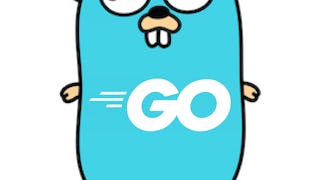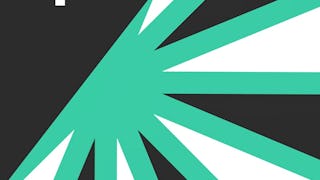Continue your exploration of the Go programming language as you learn about functions, methods, and interfaces. Topics include the implementation of functions, function types, object-orientation in Go, methods, and class instantiation. As with the first course in this series, you’ll have an opportunity to create your own Go applications so you can practice what you’re learning.

Enjoy unlimited growth with a year of Coursera Plus for $199 (regularly $399). Save now.

Functions, Methods, and Interfaces in Go
This course is part of Programming with Google Go Specialization

Instructor: Ian Harris
29,716 already enrolled
Included with
(1,013 reviews)
Skills you'll gain
Details to know

Add to your LinkedIn profile
See how employees at top companies are mastering in-demand skills

Build your subject-matter expertise
- Learn new concepts from industry experts
- Gain a foundational understanding of a subject or tool
- Develop job-relevant skills with hands-on projects
- Earn a shareable career certificate

There are 4 modules in this course
Continue your exploration of the Go programming language as you learn about functions, methods, and interfaces. Topics include the implementation of functions, function types, object-orientation in Go, methods, and class instantiation. As with the first course in this series, you’ll have an opportunity to create your own Go applications so you can practice what you’re learning. The first module introduces the concept of functions and shows you how to use them to manipulate data programmatically. Once again, the treatment of the topic begins at a fairly rudimentary level to ensure everyone is starting from the same point in terms of basic concepts.
What's included
7 videos8 readings1 assignment1 peer review
This second module continues to explore the use of functions in Go. You’ll continue learning about the capabilities and features of functions, and write a routine that solves a practical physics problem.
What's included
3 videos3 readings1 assignment1 peer review
Functions in Go have many useful and powerful capabilities, which you’ll explore in this module. At the end, you’ll develop a Go routine that takes full advantage of Go’s object orientation.
What's included
6 videos6 readings1 assignment1 peer review
This last module rounds out the course by introducing several new concepts including interfaces and polymorphism. You’ll finish the module – and course – by creating a Go routine that creates instances of a class and allows you to query its properties.
What's included
6 videos6 readings1 assignment1 peer review
Earn a career certificate
Add this credential to your LinkedIn profile, resume, or CV. Share it on social media and in your performance review.
Instructor

Offered by
Explore more from Software Development
 Status: Free
Status: Free Status: Free Trial
Status: Free TrialUniversity of California, Santa Cruz
 Status: Preview
Status: Preview
Why people choose Coursera for their career




Learner reviews
1,013 reviews
- 5 stars
73.44%
- 4 stars
18.26%
- 3 stars
4.83%
- 2 stars
1.97%
- 1 star
1.48%
Showing 3 of 1013
Reviewed on Nov 15, 2022
One of the best if not the best course on Golang that I have taken. For a long time I struggled with some very fundamental concepts in Go, but today, I am confident of my knowledge in it.
Reviewed on Nov 22, 2018
Very nice course, it gives good understanding of OOP features of Go. I liked a lot course's assignments also. Thanks, Pr. Ian Harris !
Reviewed on Oct 19, 2019
The course is well designed to allow studens to catch up with go features. The graded assestments are great to inmediatly apply what you've learned. I enjoyed this course.
Frequently asked questions
To access the course materials, assignments and to earn a Certificate, you will need to purchase the Certificate experience when you enroll in a course. You can try a Free Trial instead, or apply for Financial Aid. The course may offer 'Full Course, No Certificate' instead. This option lets you see all course materials, submit required assessments, and get a final grade. This also means that you will not be able to purchase a Certificate experience.
When you enroll in the course, you get access to all of the courses in the Specialization, and you earn a certificate when you complete the work. Your electronic Certificate will be added to your Accomplishments page - from there, you can print your Certificate or add it to your LinkedIn profile.
Yes. In select learning programs, you can apply for financial aid or a scholarship if you can’t afford the enrollment fee. If fin aid or scholarship is available for your learning program selection, you’ll find a link to apply on the description page.
More questions
Financial aid available,
¹ Some assignments in this course are AI-graded. For these assignments, your data will be used in accordance with Coursera's Privacy Notice.






